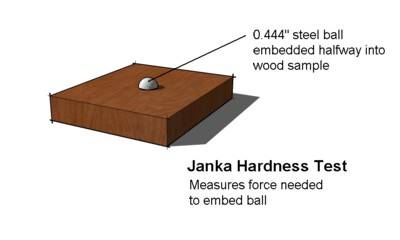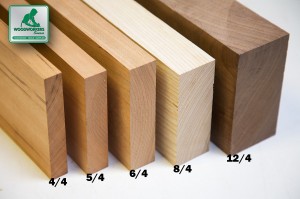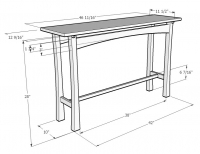
1/4" Spanish Cedar Pre-Cut Thin Boards, Humidor Lining (Choose Your Size)
SKU: hum_pack$39.00 /Pack
48 U.S. Ground Service
Why Choose Spanish Cedar?
Straight-grained, wavy, curly and mottled grain. Soft with a moderately coarse texture. Easy on tools and cutters, but the low density and softness make it prone to splintering. Resembles mahogany at first glance. Milled Spanish cedar also contains an uncontrollable resin that seeps onto the surface.
Why use Spanish cedar? Take your pick: the consistent reddish gold color, the extraordinary low weight, the ease of machining, or its general good looks. The wood is the traditional choice for the interior of humidors (cigar boxes) because it aids the aging process of cigars. While Spanish cedar is fragrant, the wood also boasts excellent resistance to rot, making it a good choice for outdoor projects.
This 1/4" thick material is available as a lining in cigar humidors. The 1/4" thickness lets you take advantage of the humidification properties on the inside of the box while using any other type of wood you want on the outside.
| Thickness | 1/4" (≈ 1/4" approx) |
| Width | 3-1/2" or 5-1/2" |
| Length | Your choice 18", 24", 36" |
| Grade | Select & Better |
| Quantity | Choose 4, 10 or 20 |
Woodworkers Also Recommend These
2.5
lbs /Bd. Ft.Wood Texture
Ease of Finishing
Light red or pinkish orange
May reach 100 feet in height with a buttressed trunk up to 72" in diameter. Bole may be 40-60 feet.
Brazilian cedar, British Guiana cedar, British Honduras cedar, Cedar, Cedre rouge, Cedro, Cedro oloroso, Cedro red, Central American cedar, Cigar box cedar, Epi, Guyana cedar, Honduras cedar, Jamaican cedar, Kapere, Mexican cedar
Cigar box lining, lead pencils, boat building, pattern work, furniture, doors.
As Advertised!
The Joys of Building with Great Woods
Understanding hardwood lumber starts right here with these wacky fractions.
If you're expecting perfect clear lumber 100% of the time, you're in for a surprise. Here's a summary of the hardwood lumber grades and what to expect from them.
Board feet isn't your everyday kind of math, but these three simple steps make it easy to figure out your project.
Here's a handy (and free) Excel worksheet that helps you estimate the lumber needs for your project.
Are woods poisonous? Hazardous to use in cutting boards or baby cribs? Find out here.
Wood is like a sponge, and it's always in a state of absorbing or releasing moisture to stay equalized with its environment. The problem with that is it also swells and shrinks. Here's what you need to know to protect your project.















